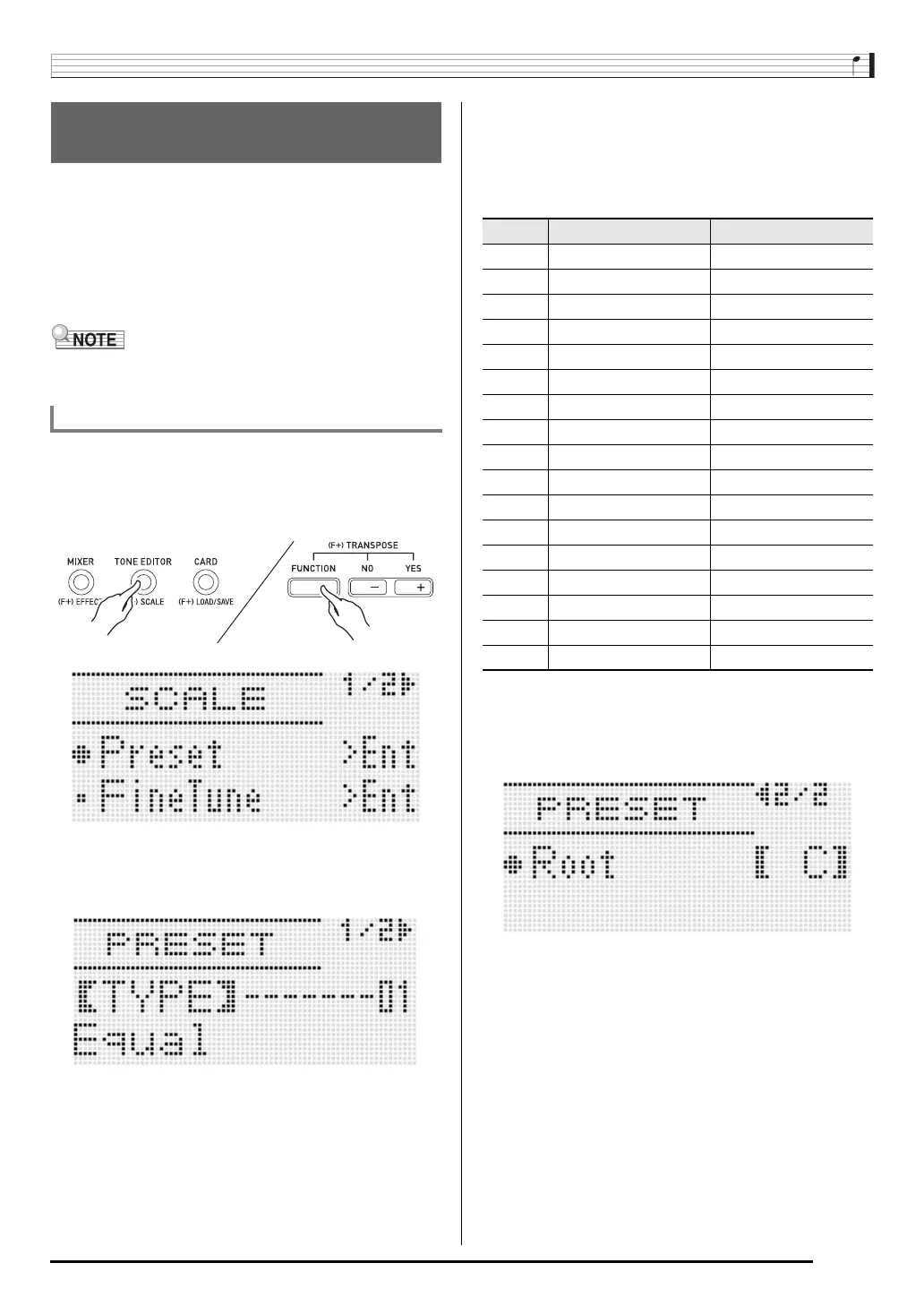Selecting and Playing a Tone
E-21
Use the scale function to select one of the 17 preset
temperaments (tunings) for the built-in sound source. You
also can fine tune each note of a scale (from C to B) in
one-cent units. After selecting one of the preset
temperaments, you can edit it to suit your particular needs.
You also can specify whether the current scale settings
(temperament setting and fine tuning adjustment) should be
applied to Auto Accompaniment (Accomp Scale).
• The settings you configure with the scale function are
retained even when the Digital Keyboard is turned off.
1.
While holding down the R-13 (FUNCTION)
button, press the C-6 (SCALE) button to display
the scale screen, with the 0 located at
“Preset”.
2.
Press the R-16 (ENTER) button.
• This displays a preset temperament selection screen
like the one shown below.
3.
Use the dial or the R-14 (–, +) buttons to select a
temperament.
• Selecting a temperament other than 01: Equal will
cause the C indicator to appear on the display.
• The following shows the temperament numbers and
names that appear on the display.
4.
Perform the following steps to specify the root
note of a temperament.
Selecting a Temperament and
Fine Tuning Its Scale
To select a preset scale
Number Screen Name Preset Temperament
01 Equal Equal temperament
02 Pure Major Just major intonation
03 Pure Minor Just minor intonation
04 Pythagorean Pythagorean system
05 Kirnberger 3 Kirnberger III
06 Werckmeister Werckmeister 1-3 (III)
07 Mean-Tone Mean tone
08 Rast Rast
09 Bayati Bayati
10 Hijaz Hijaz
11 Saba Saba
12 Dashti Dashti
13 Chahargah Chahargah
14 Segah Segah
15 Gurjari Todi Gurjari Todi
16 Chandrakauns Chandrakauns
17 Charukeshi Charukeshi
(1) Press the R-17 (i) button.
• This displays root note setting screen.
(2) Use the dial or the R-14 (–, +) buttons to change the
root note (C to B).
• You can also use the keyboard to specify the root
note.

